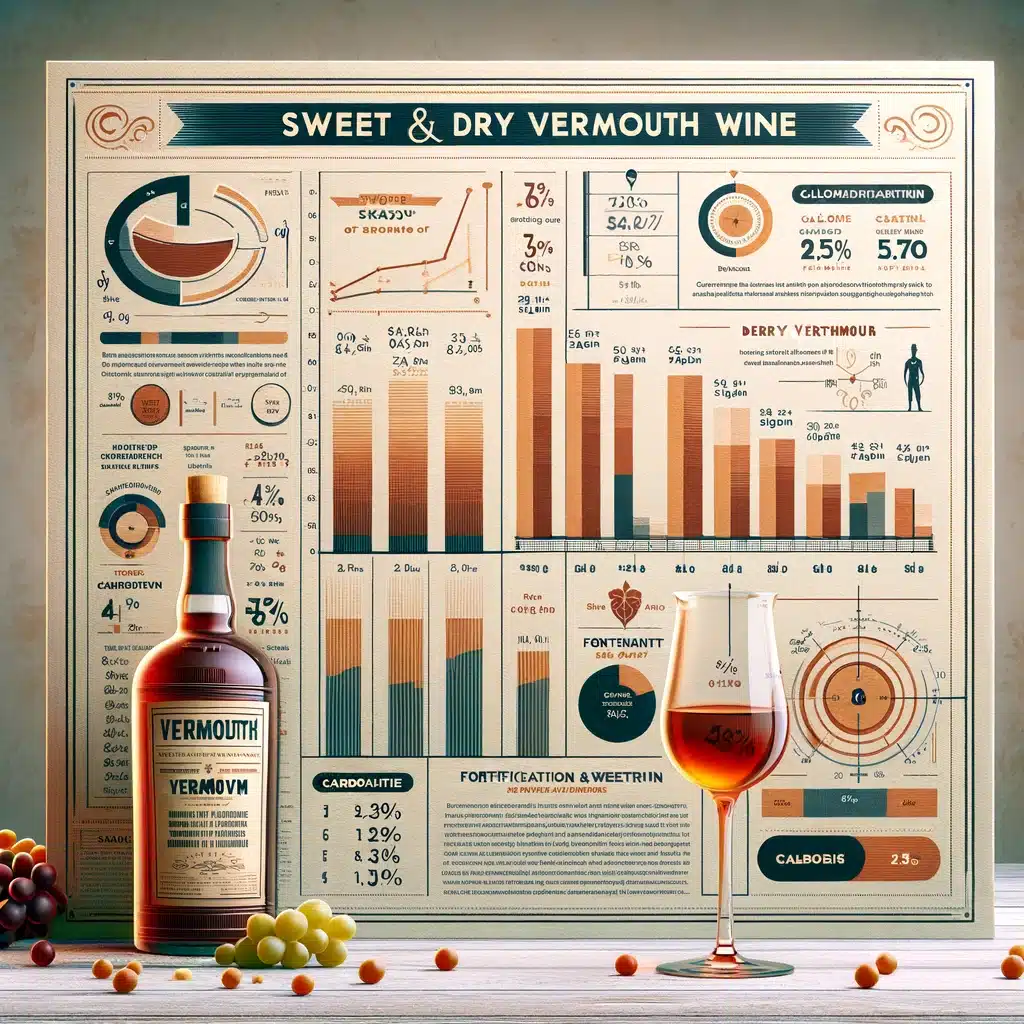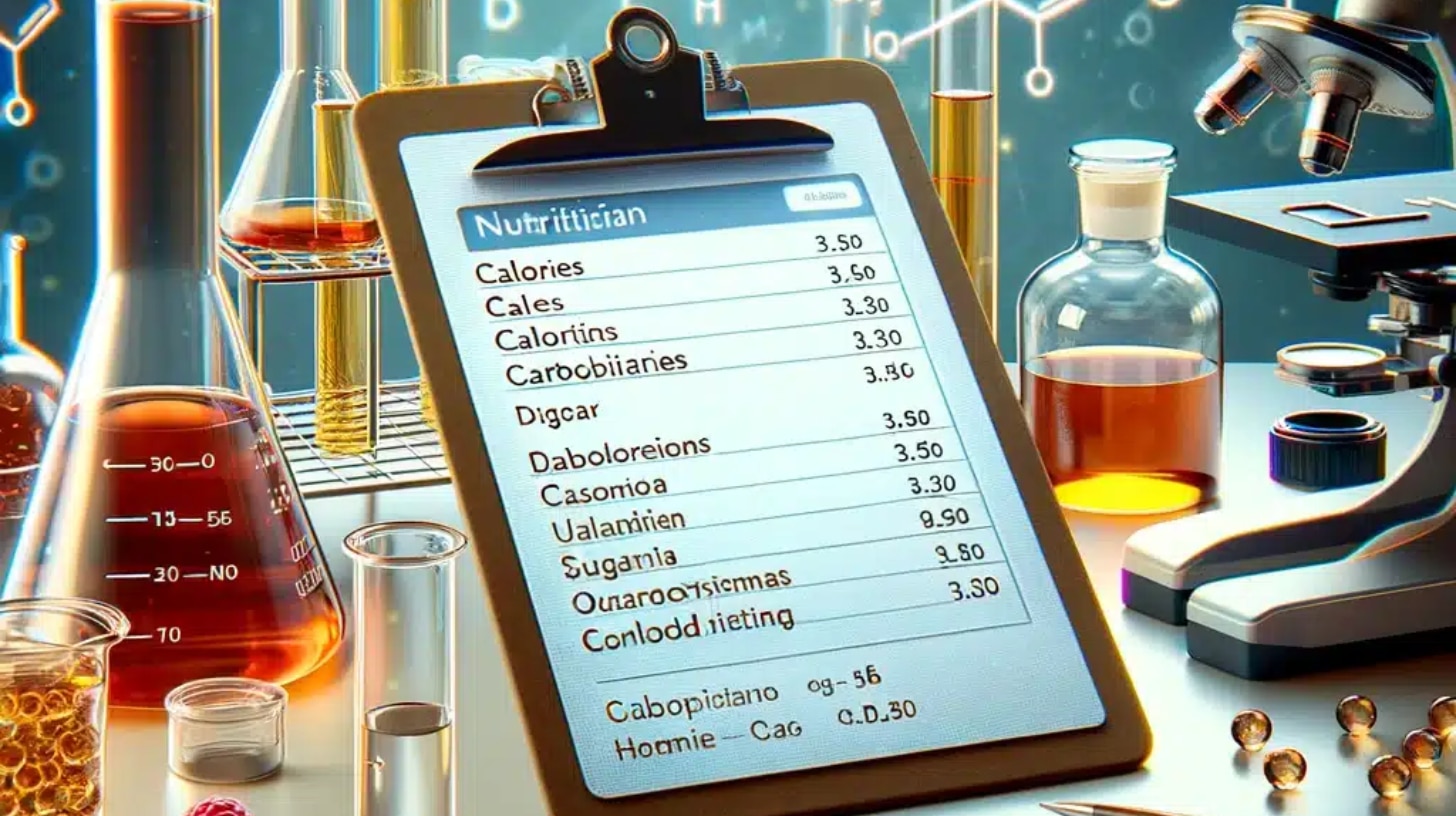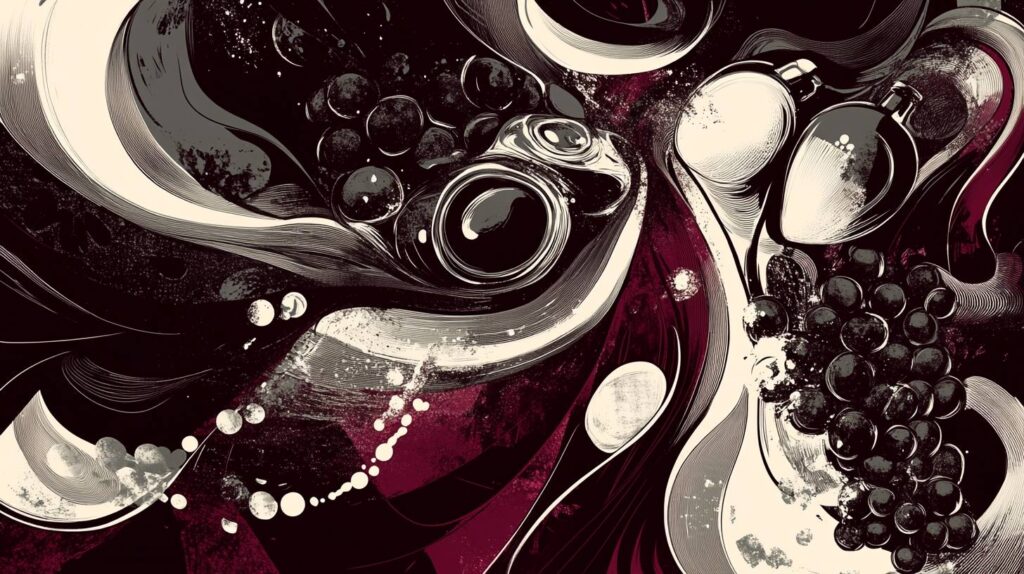Vermouth wine, a distinctive type of aromatized fortified wine, has gained popularity not only for its unique taste but also for its intriguing nutritional profile. This article delves into the nutritional aspects of vermouth, focusing specifically on its caloric and carbohydrate content. Understanding these elements is essential for anyone mindful of their dietary intake, particularly when enjoying alcoholic beverages.
Vermouth Wine Calories

The nutritional value of vermouth wine is influenced by several factors, including its base ingredients and production method. Vermouth is made from a white wine base, which is then fortified and aromatized with various botanicals. This process not only imparts unique flavours but also affects its caloric and carbohydrate content.
For instance, a 3.5 fl. oz serving of sweet vermouth contains about 165 calories and 14.1 grams of carbohydrates. In contrast, the same serving of dry vermouth typically contains 156 calories and 12 grams of carbohydrates. These values can vary slightly based on the specific brand and style of vermouth.
Aromatized Fortified Wine: A Unique Category
Vermouth is not just any wine; it’s a specialized category known as aromatized fortified wine. This means that it starts as a base wine, typically white, which is then enhanced with additional alcohol (usually grape brandy) and a mixture of herbs, spices, roots, and barks. These additions not only contribute to vermouth’s distinct taste but also to its nutritional makeup, particularly its alcohol and sugar content.
The alcohol content in vermouth ranges between 15–18% by volume, higher than most table wines but lower than spirits. This higher alcohol content contributes significantly to the vermouth wine calories count. Additionally, the sweetening process, especially in sweet vermouth, adds to its carbohydrate load.
How does the carbohydrate content in vermouth compare to that in regular wines?
The carbohydrate content in vermouth wine is distinct from that in regular wines, primarily due to the production processes involved and the added ingredients.
Regular table wines, which include both red and white varieties, typically have lower carbohydrate contents compared to vermouth. This difference arises from the fact that most table wines are classified as dry wines.
Dry wines, by definition, have very low sugar content, usually resulting from the fermentation process where yeast converts most of the grape sugars into alcohol.
Consequently, the carbohydrate content in dry wines mainly comes from residual sugars and minor amounts of other carbs derived from the grapes. On average, a standard 5 oz glass of dry wine contains about 1 to 4 grams of carbohydrates, equating to just 4 to 16 calories from carbohydrates.

In contrast, vermouth wines, especially sweet varieties, have higher carbohydrate contents. This is due to the addition of sugar or mistelle (a mixture of grape juice and alcohol) during the production process. Sweet vermouth, like other fortified wines, often contains additional sweetening agents to achieve the desired taste profile. For instance, a 3.5 fl. oz serving of sweet vermouth contains around 14.1 grams of carbohydrates, significantly higher than the carbohydrate content in a similar serving of most regular dry wines.
Dry vermouth, while lower in carbohydrates than its sweet counterpart, still generally contains more carbs than dry table wines. This is because, although less sugar is added, the fortification process and the inclusion of botanicals can contribute to its carbohydrate content. A 3.5 fl. oz serving of dry vermouth typically contains about 12 grams of carbohydrates.
How does the process of fortifying wine with alcohol change its nutritional profile?
The process of fortifying wine with alcohol and the addition of herbs and botanicals significantly alters the nutritional profile of vermouth compared to regular wines. Here’s how:
- Impact of Fortification on Nutritional Profile:
- Increased Alcohol Content: Fortification involves adding extra alcohol (usually grape brandy) to the wine. This increases the overall alcohol by volume (ABV) percentage. Vermouth typically has an ABV of 15–18%, which is higher than most table wines that average around 12% ABV. Since alcohol is calorie-dense (providing about 7 calories per gram), this elevates the calorie content of vermouth.
- Altered Calorie Content: The added alcohol contributes significantly to the vermouth wine calories count. For instance, a standard 5 oz serving of table wine might contain about 120 calories, mostly from alcohol. In contrast, the same serving of vermouth, due to its higher alcohol content, would have a higher calorie count.
- Effect on Carbohydrates: Fortification doesn’t directly add carbohydrates, but the process often goes hand-in-hand with sweetening, especially in sweet vermouths. This sweetening increases the carbohydrate content, primarily in the form of sugars.

- Impact of Herbs and Botanicals:
- Caloric Contribution: The herbs and botanicals themselves contribute minimally to the calorie content of vermouth. Their primary role is in flavoring rather than significantly altering the nutritional makeup.
- Carbohydrate Content: While botanicals do not directly contribute to the carbohydrate count, they can influence the sugar levels indirectly. For example, some herbs and botanicals may complement the sweetness, allowing for less added sugar, or in contrast, require more sugar to balance their bitter or astringent flavors.
- Nutritional Complexity: The inclusion of various herbs, spices, roots, and barks adds a layer of complexity to the nutritional profile. These botanicals can introduce trace amounts of minerals and other nutrients, although their impact on overall nutrition is minimal compared to the alcohol and sugar content.
Fortifying wine with alcohol raises the calorie content due to the higher alcohol percentage. The sweetening that often accompanies fortification increases the carbohydrate content, particularly in sweet vermouth. The herbs and botanicals mainly contribute to the flavor profile and have a negligible direct impact on calories and carbs, although they may influence the levels of added sugar.
Why does sweet vermouth have a higher carbohydrate content than dry vermouth?
Sweet vermouth has a higher carbohydrate content than dry vermouth primarily due to the differences in the sweetening process and the intended flavour profiles of these two types of vermouth.
- Sweetening Process: The key factor contributing to the higher carbohydrate content in sweet vermouth is the addition of sugar or sweetening agents during its production. Sweet vermouth is deliberately sweetened to achieve a specific taste, often involving the use of sugar, caramelized sugar, or mistelle (a mixture of grape juice and alcohol). This process significantly increases the sugar content, and consequently, the total carbohydrates.
- Intended Flavour Profiles: Sweet vermouth, known for its rich and sweet taste, is designed to have a pronounced sweetness, which is achieved by adding more sugar. This is in contrast to dry vermouth, which is characterized by its dry (less sweet) and sometimes bitter flavour profile. While dry vermouth may still contain some sugar, the quantity is substantially less than that in sweet vermouth.
- Comparative Data: For instance, a 3.5 fl. oz serving of sweet vermouth can contain around 14.1 grams of carbohydrates, a reflection of added sugars for sweetness. In contrast, the same serving of dry vermouth typically contains about 12 grams of carbohydrates, with only a small fraction of this being sugar (around 1.1 grams). The difference in sugar content directly translates to the difference in overall carbohydrate content.
In summary, the higher carbohydrate content in sweet vermouth is a result of the additional sugars added to achieve its desired sweet flavour, compared to the less sweet, more astringent profile of dry vermouth.







